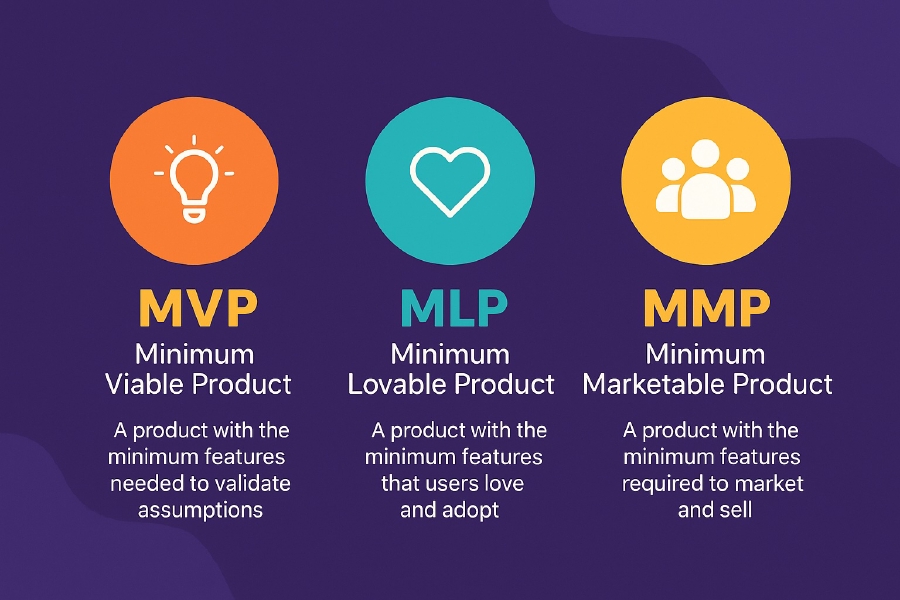MVP vs MLP vs MMP: What's the Difference and When to Use Each?
April 24, 2025

If you’re building products, chances are you’ve come across the terms MVP, MLP, and MMP. These acronyms are often confused, but each serves a unique purpose in the product lifecycle. In this article, we’ll break down what each one means, how they differ, and when to use them.
What is an MVP (Minimum Viable Product)?
An MVP is the most basic version of a product that can still deliver value to users. The goal is to get something functional into the hands of real users as fast as possible to learn from their behavior and feedback.
Key Traits:
- Minimal functionality
- Fast time-to-market
- Focused on learning, not scaling
Example: A ride-hailing app that lets users input a pickup location and request a driver — no payment system, no flashy UI.
What is an MLP (Minimum Lovable Product)?
An MLP goes beyond function to spark delight. It’s the smallest product users don’t just use, but love. The MLP is about emotional connection, not just validation.
Key Traits:
- Core features + delight factor
- Focus on user experience
- A step toward product-market fit
Example: That same ride-hailing app, but now with a beautiful interface, instant driver matching, and a friendly welcome message.
What is an MMP (Minimum Marketable Product)?
An MMP is the smallest version of the product that is sellable. It’s ready for the market, complete with features that make it valuable enough for users to pay and stick around.
Key Traits:
- Monetizable and scalable
- Enough functionality for a specific market segment
- Ready for marketing and sales
Example: The ride-hailing app now includes payments, driver ratings, and route optimization — ready for launch in a new city.
When Should You Use Each?
- MVP – When you need to validate assumptions and test your riskiest hypotheses.
- MLP – When you want early adopters to fall in love with your product.
- MMP – When you’re ready to grow and generate revenue in a target market.
Final Thoughts
Each concept—MVP, MLP, and MMP—plays a specific role in building successful products. Start with an MVP to learn, evolve into an MLP to connect, and grow with an MMP to thrive in the market. Understanding which type of product fits your current phase is key to making smarter, faster product decisions.